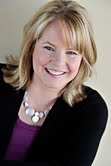publication date: Mar 1, 2012
|
author/source: Leah Eustace
I'm going to let you in on a little secret. Over the
years, we've had clients who've paid tens of thousands of dollars to have their
data analyzed by outside firms. They've been presented with fancy reports and a
shortlist of the people in their database who are the best prospects for a
bequest.

We've gone in afterwards and, with a few suggestions and a
wee bit of guidance, have coached the charity's staff on how to pull up their
own list. The list they pull up is virtually identical to the fancy-pants one for
which they paid tens of thousands of dollars.
So, in this month's tip, I'm going to guide you through
pulling up your own list of prospects.
Your list will have four segments, and I'll start with the
segment that will lead to the highest number of expectancies.
The "Misses"
Pull up all donors who use the honorific "Miss." Why? Well,
for one thing, they're likely women who never married, and research tells us
that women who never married are more likely to leave a bequest than women who
are married or widowed.
Women who use the honorific "Miss" are also more likely to
be older women. Younger women usually go with "Ms." And younger women aren't as
likely to be thinking about leaving a bequest to charity in their will.
The "Monthlies"
Your "Misses" segment will be a small one, so let's dig a
little deeper. Now pull up all your active monthly donors. It doesn't matter
how long they've been monthly donors. What's more important is that they've
deepened their relationship with your charity and are more likely than your
average donor to consider leaving you a bequest.
The "Loyals"
Like your monthly donors, those donors who have given to you
for three or more consecutive years have indicated to you that they are more
deeply committed to your cause. They're sticking with you, and you're probably
one of their favourite charities.
The "Majors"
Donors whose last gift was $500 or more are also good
bequest prospects. There's a reason they're last on the list, though. They're
less likely than the first three groups to be loyal to your cause (or in the
right age group, like our "Misses"). However, they're still more likely to be
prospects for a bequest than groups of donors not listed here.
By the end of this exercise, you'll have a list of great
bequest prospects. Start stewarding and cultivating them and you'll find
yourself polishing a few diamonds.
Bonus tips
We've conducted dozens of focus groups with donors and here
are two bonus tips directly from those sessions.
-
Donors already know how to make a bequest. Instead, tell
them why
they should make that gift to your charity.
-
Always keep your cause front and centre. Donors give to the
cause, not the organization.
For more ideas on bequest
research, cultivation, solicitation and other planned giving tips, check out Gift Planning in Canada.
Leah Eustace is principal and managing partner with Good Works. A "fundraiser's fundraiser"
with a wide background in charitable fund development, she's worked with
clients including the Canadian Red Cross, the Canadian Breast Cancer
Foundation, CARE Canada and the UN Refugee Agency Canada on social media,
direct marketing, donor research and legacy marketing.
She's president of the Ottawa Chapter of AFP and a member of AHP,
NTEN, the CMA and CAGP.
If you have other ideas or tips to share, contact her at leah@goodworksco.ca.

